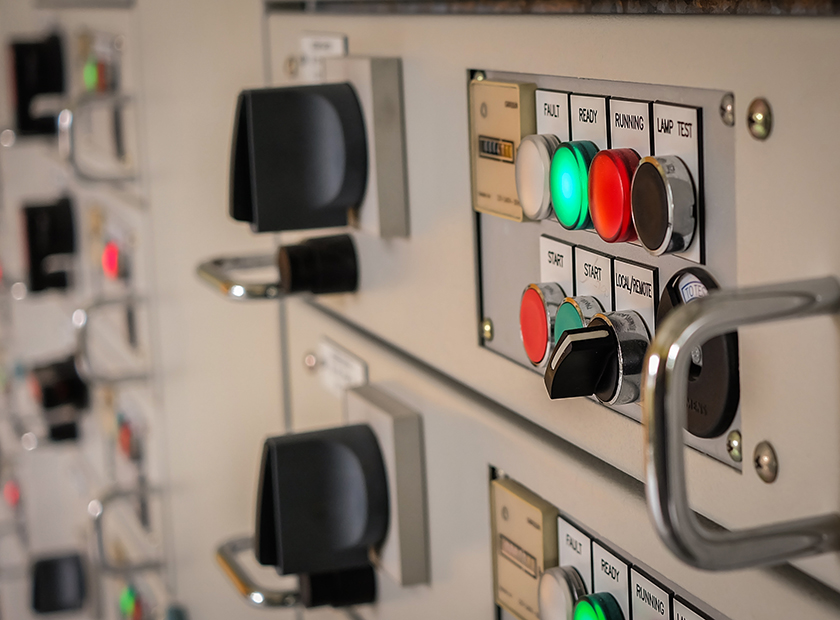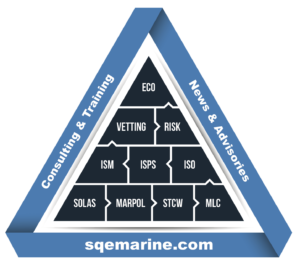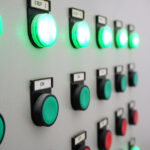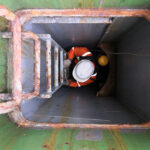Overview
A new Concentrated Inspection Campaign (CIC) on Emergency Systems and Procedures has been recently announced jointly by Paris, Tokyo MoU, Black Sea and Indian MoU to be held for a period of three months, commencing from 1 September 2019 and ending 30 November 2019.
Questionnaire
A CIC questionnaire is to be used during PSC inspections including eleven items with the aim to check compliance with regulation concerning the Emergency Systems and Procedures onboard. For information on the items that the PSC inspectors will check, please refer to Annex 1 which also include the aforementioned questionnaire.
Actions required
Ship managers should be prepared for the upcoming CIC taking into consideration the items involved in the questionnaire and addressing all issues as appropriate. Since Emergency Systems are related to many operations on board, adequate preparation is required. In this regard, such systems and alarm panels should be checked thoroughly while related drills need to be scheduled in order to avoid PSC deficiencies.
SQEMARINE, can provide guidance and further information on CIC requirements and implementation issues. Please refer to Annex 2 for a best practice guide.
Annex 1: CIC Questionnaire
| No. | Question | Yes | No | N/A |
| Documentation |
||||
| 1. | Is the damage Control plan readily available on board? | |||
| Operating Emergency Systems | ||||
| 2.* | Is the public address system capable of broadcasting emergency announcements? | |||
| 3.* | For ships with water level detectors installed, is the system and alarm arrangement operational? | |||
| 4.* | Is the steering gear system and its related emergency alarms operational? | |||
| 5. | Does the muster list specify details in accordance with requirements of SOLAS 1996-1998 Amendment, Chapter III, Regulation 37? | |||
| 6.* | Does the emergency source of electrical power supply its power correctly to essential equipment for safety in emergency? | |||
| 7a.* | Where the emergency source of electrical power is a generator, is it in correct operational condition? | |||
| 7b.* | Where the emergency source of electrical power is an accumulator battery, are the batteries and its switchboard in good condition? | |||
| 8. | Is emergency fire pump in full operational condition? | |||
| Crew Familiarization with emergency systems | ||||
| 9.* | Where a fire drill and/or abandon ship drill was witnessed was it found to be satisfactory? | |||
| 10.* | For the above checked emergency equipment are the relevant crews familiar with the operation? | |||
| 11. | Has the ship detained, as a result of the Inspection Campaign? | |||
Notes:
- If “NO” is selected, for questions marked with an “*”, the ship may be considered for detention.
- Where there is no box in the N/A column, then either box “Yes” or “No” should be selected as appropriate.
Annex 2: Best Practice Guide
1. Is the damage Control plan readily available on board?
An appropriate and vessel specific Damage Control Plan should be available on board in accordance with IMO MSC.1/Circular 1245 guidance. The damage control plan and damage control booklet are intended to provide ship’s officers with clear information on the ship’s watertight subdivision and equipment related to maintaining the boundaries in the event of damage to the ship causing flooding. The damage control plan and damage control booklet should be clear and easy to understand. Crew members (senior officers mostly) should be familiarized on the terms, use and calculations included in these documents. Damage control plans and damage control booklets should be in printed form. The use of on-board computers, with damage stability software developed for the specific ship, and familiar to properly trained ship’s officers can provide a rapid means to supplement the information in the plan and booklet for effective damage control. In such case the IMO MSC.891 should be followed.
2. Is the public address system capable of broadcasting emergency announcements?
Each ship should be equipped with a public address system as per SOLAS III and LSA code requirement. The public address system shall be a loudspeaker installation enabling the broadcast or messages into all spaces where crew members or passengers, or both, are normally present, and to muster stations. It shall allow for the broadcast of messages from the navigation bridge and such other places on board the ship as the Administration deems necessary. The system should be protected by unauthorized use. The sound levels for each space are specified in SOLAS III, LSA Code and IMO Unified interpretation MSC.1/Circ.1530.
3. For ships with water level detectors installed, is the system and alarm arrangement operational?
Water level detector means a system comprising sensors and indication devices that detect and warn of water ingress in cargo holds and other spaces as required in SOLAS regulations XII/12.1 or II-1/23-3. Alarm performance requirements should be in accordance with IMO NSC 188 and IACS SC 180. The alarm indication system should have the following abilities:
- Caro Holds – the alarm should identify the space
- An alarm, both visual and audible, activated when the depth of water at the sensor reaches the pre-alarm level in the space being monitored.
- An alarm, both visual and audible (not same with pre-alarm), activated when the level of water at the sensor reaches the main alarm level, indicating increasing water level in a cargo hold.
- Other spaces. Alarm should be the same with alarms as per item a.ii.
- An alarm, both visual and audible, indicating the presence of water in the compartment being monitored reaches the sensor.
The Alarm display on the bridge (and other spaces if additional display exists) should be in proper working condition with adequate lighting. Use the alarm test function to check the lights working condition on the display.
Maintenance of water level detector systems should be in accordance with manufactures’ requirements and Classification society instructions.
4. Is the steering gear system and its related emergency alarms operational?
Steering gear installations and emergency alarms should be in accordance with SOLAS V Reg.26. The regulation requires pre-sailing tests of steering gear. The test procedure should include:
- The main steering gear
- The auxiliary steering gear
- The remote steering gear control systems
- The steering positions located on the navigation bridge
- The emergency power supply
- The rudder angle indicators in relation to the actual position of the rudder
- The remote steering gear control system power failure alarms
- The steering gear power unit failure alarms
- The automatic isolating arrangements and other automatic equipment
Tests of the Steering gear to conducted in accordance with Company’s SMS and other additional Port State Control Requirements. (eg USCG requires Steering gear test 12 hours prior arrival to USA port).
5. Does the muster list specify details in accordance with requirements of SOLAS 1996-1998 Amendment, Chapter III, Regulation 37?
Muster Lists on board should be according to SOLAS Chapter III, Reg. 8 and 37 requirements. Ensure that Muster Lists on board:
- Are update with latest crew changes
- Are posted to conspicuous places throughout the ship
- Are in accordance with Flag Administration requirements and written in ship’s working language as per SMS.
- All type of possible emergencies are included and each crew member has clearly defined specific duties for each emergency. Such duties include the preparation, swinging out or deploying of survival craft and other life-saving appliances, the closing of watertight and fire doors, and all other openings such as skylights, portholes and side scuttles and any openings in the hull. Duties in connection with fire-fighting, the use of communication equipment and the equipping of survival craft must also be shown.
6. Does the emergency source of electrical power supply its power correctly to essential equipment for safety in emergency?
Emergency source of electrical power requirements should be as per SOLAS CHAPTER II-1 Regulation 42 – passenger ships and Regulation 43- cargo ships.
The distribution of the emergency power should be such in order to provide an additional period (36 for passenger ships, 18 for cargo ships) of sufficient power to specific systems. Such systems include (indicative list, additional items are included in SOLAS related regulations):
- Emergency Lighting
- Communication systems
- Navigation systems
- Fire detection and alarms
- Steering gear (period of time required by SOLAS regulation 29.14)
- Main engine control and alarms
- Fire pumps
Frequency of testing the energy distribution from emergency source of electrical power on board as per Company’s SMS, Flag Administration requirements and classification society guidance.
7a. Where the emergency source of electrical power is a generator, is it in correct operational condition?
The emergency generator is one of most common detainable items during PSC inspections. The Emergency generator should be able to start automatically in case of black out. In order to check the appropriate auto working condition or emergency generator a simulation test should be conducted (if applicable) by adequate trained and familiarized crew members. The Emergency generator should be able to start manual with two different ways. Crew should be able to demonstrate both ways of starting. A common issue during PSC inspections is the level of fuel in supportive tank. Follow the periodic inspections and checks of tank level of emergency generator to be always above 90%.
When testing the emergency generator ensure that all lights and indicators are properly working on emergency switchboard.
7b. Where the emergency source of electrical power is an accumulator battery, are the batteries and its switchboard in good condition?
The battery sourced emergency electrical power should be able to auto supply the emergency switch board in case of black out. Additional it should be able to carry the emergency electrical load without recharging while maintaining the voltage of the battery throughout the discharge period within 12% above or below its nominal voltage. Batteries’ charging equipment should be periodically inspected by adequate trained crew members as per Company’s SMS.
8. Is emergency fire pump in full operational condition?
The emergency fire pump should be able to start and provide adequate water pressure to fire system. The emergency fire pump should have adequate fuel in tank in order to operate at least for 3 hours. A common item during PSC inspections is the additional fuel availability of reserve fuel outside main machinery space in order to allow the pump to run for additional 15 hours.
Check the capability and pressure level of emergency fire pump by deploying a fire hose on bridge wing and one on the forecastle and check the water stream. This a common practice of PSC officers to inspect the ability of emergency fire pump to provide adequate pressure.
Prior entering a port check the working condition and fuel availability status of emergency fire pump.
9. Where a fire drill and/or abandon ship drill was witnessed was it found to be satisfactory?
Drills on board are a common problematic item during PSC inspections. In general they consist a problematic area to emergency response preparation in order to address real incidents. The most common cause of the problem is the industry’s approach. Most of Companies and seafarers approach the drills as “paper related” issue. In order to have adequate performance during drills, the crew should be guided and instructed by inspired officers who know and understand the need of the drill’s outcome for emergency preparation. A step by step approach to all types of drills is a good solution for adequate performance. Each drill should have three basic parts (after announcement):
- Assembly and briefing. Gather all teams and explain in plain language the scope, the main actions, main equipment use and the required result for the drill
- Supervised execution of the drill. Guide all teams to be deployed as required, to use the equipment correctly and execute all required steps of the emergency response for the specific drill.
- Debriefing. Provide all observations made by each team leader and explain the corrections required in order to eliminate re occurrence.
10. For the above checked emergency equipment are the relevant crews familiar with the operation?
Most of actions required for this questions covered by actions in question 9. However a training program on board may be established and be focused on deployment and use of equipment required during emergencies. Most of such items supposed to be covered during initial seafarers training in accordance with STCW (basic and advance). However the familiarization onboard is a Company specific issue (as per ISM code). During familiarization period crew members should be trained to use the on board installed equipment used for emergencies.
You may also find further information on Emergency Systems and Procedures CIC at SAFETY4SEA






